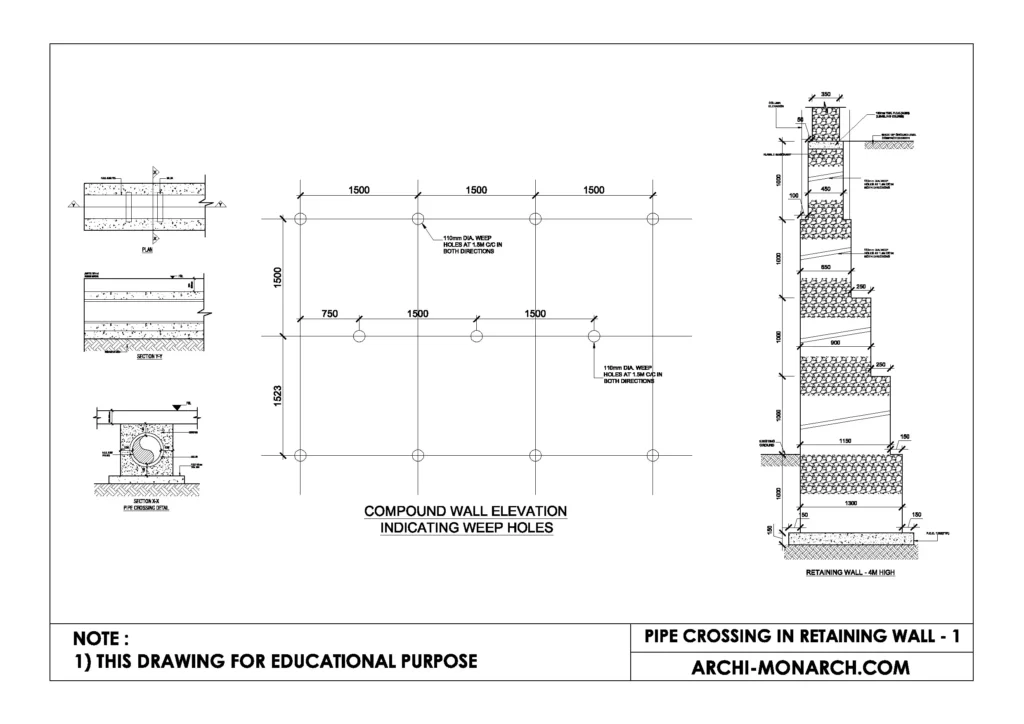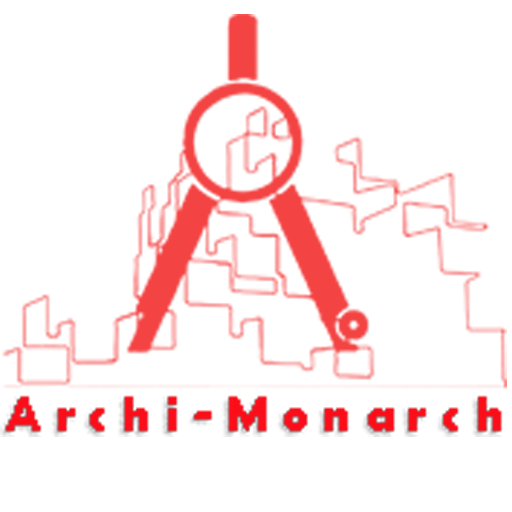In architecture and civil engineering, pipe crossing in retaining walls refers to the integration of utility conduits—such as drainage, water supply, or electrical conduits—through or along a retaining wall structure. This is a critical design consideration, as it requires careful planning to ensure both the structural integrity of the wall and the functionality of the pipes.
Openings or sleeves must be strategically located and properly reinforced to prevent weakening of the wall, especially under lateral earth pressure. Additionally, waterproofing and sealing around the pipes are essential to prevent water infiltration and potential erosion behind the wall.
Proper coordination between structural, civil, and MEP (mechanical, electrical, and plumbing) teams is necessary to ensure safe and efficient pipe crossings without compromising the performance or longevity of the retaining wall.
If you want to know about the staircase detail or toilet detail or miscellaneous detail, please click the link.
Image of Pipe crossing in retaining wall detail and downloadable (in DWG) link below

Pipe crossing in retaining wall detail drawing – 1
In construction, a pipe crossing in a retaining wall detail drawing illustrates how utility pipes (such as stormwater, sewage, or electrical conduits) are integrated into the retaining wall structure without compromising its stability or waterproofing.
These drawings are critical in both architectural and structural plans, showing precise locations, sizes, materials, and methods of installation.
Key elements typically shown in a pipe crossing detail drawing include:
- Wall Section View: Shows the retaining wall in cross-section, including footing, backfill, drainage layer, and reinforcement.
- Pipe Sleeve or Duct: A larger sleeve (usually PVC or steel) is embedded through the wall to allow pipe passage. This prevents direct contact with the wall material, reducing stress and potential cracking.
- Reinforcement Details: Additional rebars may be added around the pipe opening to maintain structural integrity.
- Waterproofing Measures: Sealants or flexible gaskets (e.g., Link-Seals) are detailed around the pipe to prevent water ingress.
- Slope and Drainage Direction: Indicated to ensure water drains away from the wall, often towards a drainage system or weep holes.
- Backfill and Filter Material: Shown behind the wall to support drainage and reduce hydrostatic pressure.
These detail drawings are coordinated between architectural, structural, and MEP drawings, and must comply with local building codes and engineering standards.
Our tips to help you improve your architectural Pipe crossing in retaining wall detailing.
